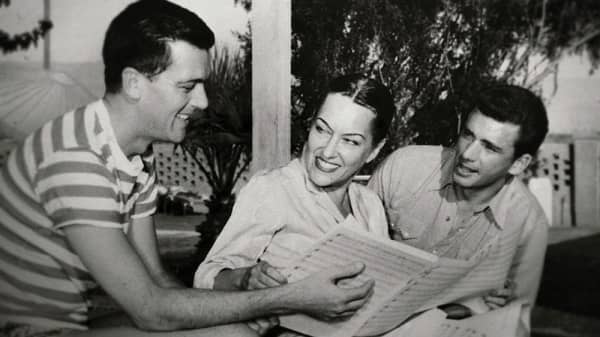Sunset Boulevard, Andrew Lloyd Webber’s Broadway musical version of Billy Wilder’s 1950s film, is well-known. Few people realize, however, that Gloria Swanson was the one who came up with the idea for the adaption.
Swanson plays Norma Desmond, an old and neurotic silent movie actress in Wilder’s first film noir. Swanson’s Desmond enlists the help of William Holden’s Joe Gillis, a gorgeous new screenwriter, to help her revive her career.
Swanson took on the adaptation project with Dickson Hughes and Richard Stapley, who were a couple at the time, five years after acting as Desmond. When a weird love triangle between the trio derailed their project, they were almost completed creating the book and score. Despite the fact that Swanson, Stapley, and Hughes are no longer alive, director Jeffrey Schwarz dug deep into the past to find out what happened to the musical that never was.
Arriving at the Concept
As a major fan of Wilder’s Sunset Boulevard, Schwarz claimed that he read Sam Staggs’ Close-Up On Sunset Boulevard to get the idea for a documentary. The book details the production of the picture, including the scripting, casting, and filming, as well as how the film was almost rejected by Paramount. During his interview with Queertv Guru, he claimed that he read a chapter in the book about the musical, which piqued his interest because few people were aware of it.
As he studied more about the musical, he realized that it was less about Swanson and more about the people around him. He was inspired to work on the musical because he thought the stories behind it had the makings of a fantastic queer love story.

For Schwarz, whose films normally focus on iconic queer figures, this documentary was unique in that it told the tales of three different persons for the first time. The documentary, which had been in the works for eight years, had its world premiere on August 17 at Outfest.
‘Boulevard! A Hollywood Story’: The Plot
The filmmaker learns about the trail of players who were involved in the making of Boulevard through thorough investigation. Schwarz obtained documented interviews from lyricists and composers and learned what happened, despite the fact that the musical never made it to the stage.
The documentary’s first half focuses on Swanson and her rise to become Hollywood’s highest-paid actress during the silent cinema era, as well as her dramatic role as the forgotten movie star. Swanson, according to Schwarz, enjoyed being videotaped and interviewed but never mentioned the musical, despite the fact that she retained all of the letters, sheet music, and test recordings that she, Stapley, and Hughes created for it.

Another segment of the film focuses on Richard Stapley, a gay man in the 1950s who had a queer love affair. According to Deadline, the film is “a piece of entertainment history as well as cultural and LGBTQ+ history.” The documentary also delves into the trio’s love triangle. According to Director Schwarz,
Gloria, Richard Stapley, and Dickson Hughes form a love triangle in our film. Gloria developed feelings for Richard Stapley during the creation of the musical, much like she did in the film.
You may also like to read: Bruce Springsteen, Ryan Haywood, Brendon Burchard, Mia Hayward
